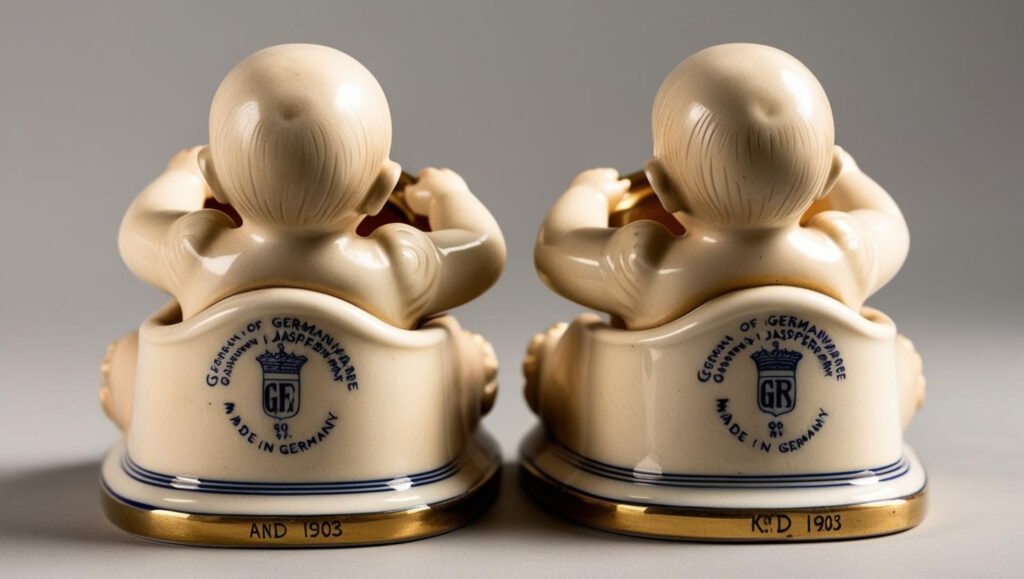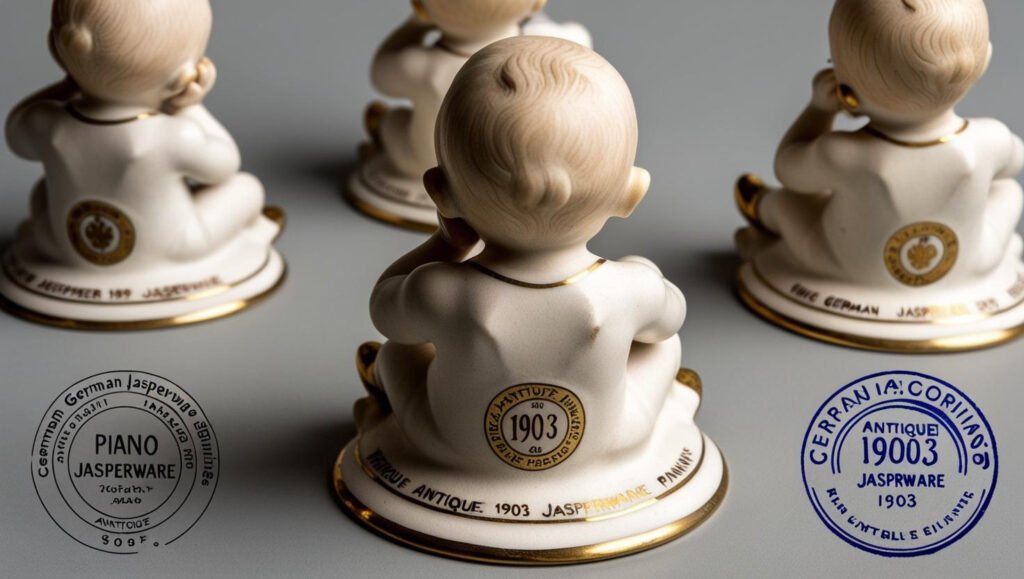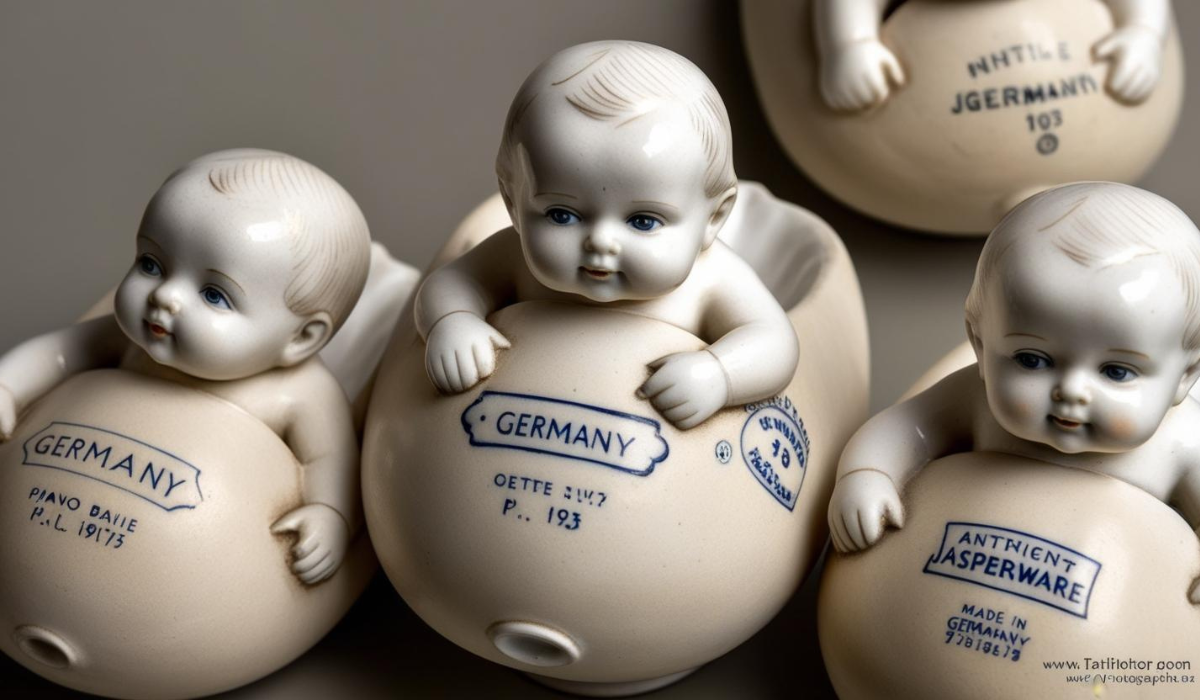Antique lovers and collectors alike have long admired the charm and artistry of 1903 German jasperware piano babies. These figurines, known for their delicate craftsmanship and historical allure, remain sought-after collectable treasures. But as with any precious antique, ensuring authenticity is crucial, especially given the presence of reproductions in the market.
If you’re wondering how to verify and value these figurines, understanding the markings used during production is the first step. This guide will walk you through everything you need to know about identifying authentic 1903 German jasperware piano babies, from deciphering manufacturers’ marks to spotting the unique features of these timeless pieces.

What Are 1903 German Jasperware Piano Babies?
Before we explore how to identify them, it’s worth understanding what 1903 German jasperware piano babies are. Typically crafted from bisque porcelain, these figurines depict chubby, adorable babies in lifelike poses, often donning expressive smiles or curious gazes.
Originally used as decorative items to adorn pianos (hence the name), they became beloved keepsakes during the early 20th century. The jasperware finish a soft, matte texture sets these figurines apart from their glossy porcelain counterparts.
What makes these pieces even more fascinating is their historical origin. Produced primarily in Germany, known as a hub for high-quality porcelain, these figurines showcase the intricate handiwork and artistry of the time.
The Significance of Manufacturer’s Marks
One of the most reliable ways to authenticate a 1903 German jasperware piano baby is to examine its markings. Manufacturers often left specific marks that provide valuable clues about the figurine’s history and authenticity.

Key Types of Manufacturer’s Marks
1. Company Name or Logo
Many German porcelain manufacturers included their company name or logo as a mark. These were typically stamped or engraved on the base or back of the figurine and serve as a signature of quality. For instance, companies like Gebrüder Heubach—a prominent porcelain factory—are well-known for imprinting their logos into piano babies of this era.
2. Initials and Symbols
Some figurines also bear the initials of the manufacturer, often alongside a symbol or unique design. These subtle markers can differentiate one brand from another, helping collectors determine the origins of particular pieces.
3. Country of Origin
Marks such as “Germany” or “Made in Germany” were commonly added to confirm the country of origin. This is a key indicator of authenticity, especially for jasperware figurines produced for export around 1903.
Types of Markings to Look For
The markings found on German jasperware piano babies usually fall into one of three categories, each offering unique insights into the figurine’s production process.
Stamped Marks
Stamped marks were imprinted during the manufacturing process and are typically the most consistent and clear. These marks often feature company names or brand logos and are easily identifiable when well-preserved.
Engraved Marks
Engraved marks, on the other hand, are carved directly into the figurine’s surface. While they add an element of uniqueness, these marks can wear down over time, making them trickier to decipher on older pieces.
Hand-Painted Marks
Artisans sometimes added hand-painted marks in gold or cobalt blue. These are less common but signify exclusivity and artistic effort. Each hand-painted marking is slightly unique, which adds charm and value to the figurine.

How to Authenticate a 1903 German Jasperware Piano Baby
While examining the marks is a good starting place, there are additional steps you can take to confirm authenticity.
1. Examine the Mark
Start by closely inspecting the base or backside of the figurine for clarity and consistency in its markings. Cross-check the observed mark with known logos or stamps from German manufacturers during this era.
2. Assess the Material
Authentic jasperware piano babies should have a matte finish and a bisque-like texture. Their smooth yet soft surface sets them apart from shiny porcelain reproductions.
3. Look for Mold Numbers or Artist Signatures
Some genuine pieces will feature mold numbers or even artist signatures. These details can not only verify authenticity but also give a deeper understanding of the figurine’s origins.
4. Seek Expert Opinion
If you’re unsure, don’t hesitate to reach out to a trusted antiques dealer or appraiser who specializes in porcelain or jasperware. Their expertise can provide invaluable insights and confidently determine authenticity.
Why Authenticity Matters
Authenticating a 1903 German jasperware piano baby not only enhances its monetary value but also preserves the history and craftsmanship behind these cherished collectibles. Holding an authentic piece connects you to a bygone era, where artistry and attention to detail reigned supreme.
Whether you’re a seasoned collector or new to the world of antiques, authenticating these figurines ensures their legacy endures for future generations to admire.
FAQs
Q1. How can I differentiate authentic marks from fake ones?
Genuine marks are often clear and neatly applied, whether stamped, engraved, or hand-painted. Researching or comparing with verified examples from notable manufacturers like Gebrüder Heubach can help you spot discrepancies in forgeries.
Q2. Are there any specific manufacturers I should look out for?
Yes, Gebrüder Heubach is one of the most recognized producers of jasperware piano babies. Other prominent names include Conta & Boehme and Arman Marseille.
Q3. What should I do if the marks are worn off?
If markings are no longer legible, focus on other authenticity indicators such as the material quality, texture, and overall craftsmanship. Seeking advice from a professional appraiser can also help in such cases.
Q4. Does the absence of a mark always mean a figurine is a reproduction?
Not necessarily. While markings are a primary method of authentication, some pieces may lack visible marks due to wear or specific production practices. Again, evaluating the material and artistry can offer additional clarity.
Q5. Where can I find more resources on jasperware piano babies?
You can explore antique guides, online collector forums, or connect with auction houses specializing in porcelain figurines.
Treasure the Timeless Elegance
Understanding how to identify and authenticate 1903 German jasperware piano babies is an essential skill for any collector or enthusiast. From examining marks to assessing materials, every detail offers a glimpse into the artistry and care that these figurines embody.
If you own a piece or are considering adding one to your collection, take the time to research and appreciate its story. The beauty of antiques lies not just in their aesthetic but in the historical connections they represent.

